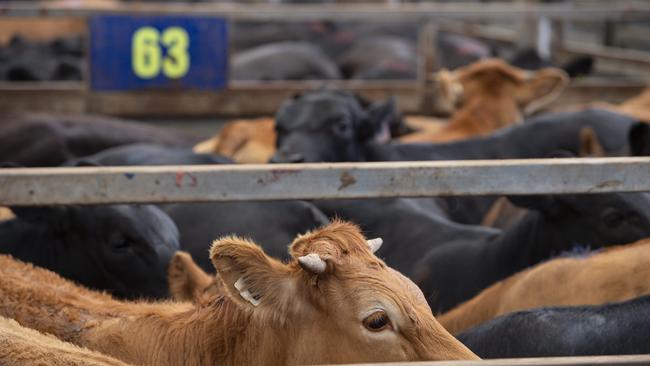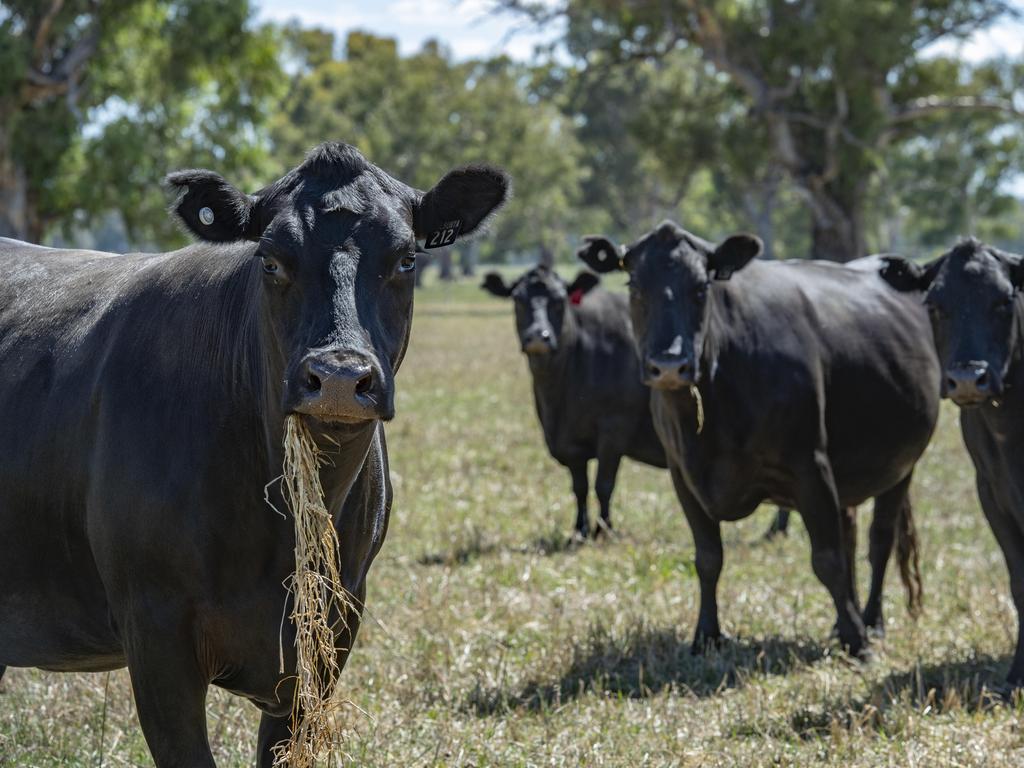Global Food Forum: How Anna Speer is leading Woolworths’ partnership with farmers

Speer runs Greenstock, the Woolworths business dedicated to partnering with farmers. Her ambition is to reimagine that partnership.
“We manage the purchase of 10,000 cattle, 14,000 pigs and 24,000 lamb per week and take them through our primary processing partnerships, our secondary manufacturing relationships, all the way through to the shelves,” she says.
“It’s about getting the quality product in a sustainable way to the shelf every day of the week, a tailored order for each of our 1200 stores around Australia.”
To put that in perspective, AACo typically sells around 800 head of cattle a week to the market.
So why did the well-respected stud registrar at Consolidated Pastoral, who rose to run livestock exchange Auctions Plus and the chief operating officer’s job at AACo, fighting for farmers, end up with one of the big supermarkets?
“Some people thought I’d kicked a black cat jumping the fence. I don’t have dirt on my boots as often as I’d like to,” Speer admits.
She says after speaking with the Woolworths team, and understanding the sheer reach of the business and the agenda for sustainability, she saw the opportunity to lead the future of protein.
“It was a chance to take my industry knowledge and what I’ve been doing for pretty much my whole career and bring it into the retail space and think about how we reimagine partnerships in the value chain,” she says.
For Speer, now based in Brisbane, much of the last 12 month has been a whirlwind.
“I was actually pregnant when Woolies employed me, particularly in the middle Covid, and I was a non-retailer stepping into a supply chain role,” she says.
She learned from the fire hose for the first six months and had baby Molly in January.
“Then it was managing Covid disruptions with the team of people have been in the game for a long time,” Speer says. “There was a shortages of pallets, and of labour, but we worked to make sure we got products to the shelf as well as looking after our partnerships down the supply chain.”
The paddock-to-plate idea is not new but there are now the different challenges of global volatility and sustainability. Greenstock is exploring different models that give pricing incentives to producers such as paying on red meat yield and quality.
“It is also how we play a role in decarbonising the beef supply chain and can be more aggressive in waste management in these partnerships,” Speer says. “As a large retailer we feel we have a role in supporting that journey and learning from our farmers on how we can evolve together.”
Speer says there is no silver bullet for decarbonising the supply chain.
Greenstock is playing in the asparagopsis space, the seaweed that reduces carbon emissions in cattle. It is partnering with farmers to look at grazing management to help move cattle through the supply chain faster. And there is renewed focus on animal welfare.
“Our customers are telling us they want to see more sustainable products on the shelf, better animal welfare,” she says.
About 36 per cent of Woolworths customers say they are prepared to pay more for sustainable products but Speer says Greenstock also need to think about value adding in partnerships down the supply chain to help manage the costs.
Supplier relationships have sometimes been under strain with supermarkets, particularly over pricing. This year, food inflation has taken hold on the supermarket shelf. Speer is clear that Greenstock does not control the shelf price. “We are not a supplier but a partner in a vertically integrated supply chain,” she says. “And relationships need to be there for the long term.”
At the moment, farmers are enjoying high beef prices and good seasonal conditions. Now is the time to think how to respond to declining red meat consumption, which has been driven by both health and sustainability consumer demands.
“The opportunity for us is the premium space, the branded space, as well as how to optimise the carcass and that’s a really cool role for Greenstock looking at what we call retail fallout products that we don’t use on our shelves,” Speer says.
Today’s GDP number of 0.8 per cent for the quarter and 3.3 per cent annually beat expectations, causing analysts to up their forecasts. This is welcome news because other signs this week suggest less optimism about future growth.
On the plus side, the breakdown of the ABS figures reveals Australians continue to use their pandemic savings to spend on dining out or more general retail therapy. Consumer spending contributed 0.8 per cent to the GDP read.
Another strong contributor to growth was the build-up in inventories by business to build resilience against the ongoing lumpy flow in supply chains.
The limits to growth threatening Australian prosperity are growing, however.
In Melbourne on Tuesday, ANZ chief executive Shayne Elliott said the Australian economy was “sort of on fire” and that was exacerbating the squeeze on labour and pushing up inflation.
The most graphic impact on business is the residential construction industry, which this year has lost businesses ABG Group, Privium, Probuild and Condey, with the ongoing viability of the country’s largest builder Metricon in question.
This week, NAB boss Ross McEwan said construction was the part of his book he was watching most closely.
Another space to watch is electricity retailing, squeezed by rising wholesale costs. On Wednesday, ReAmped Energy took the extraordinary step of asking their 70,000 plus customers to leave and join another retailer or face a doubling of prices. The inference here is that were it to maintain current prices for every customer it has on the books, then for every customer the loss would be greater.
Talking around the national accounts, Treasurer Jim Chalmers said there was no easy fix to the march upwards of gas prices.
“There is no single solution – whether it is liquid fuels, whether it is the gas price, the electricity price – each of these are concerning on their own, but together, potentially extremely challenging to the Australian economy,” he said.
At the Australian’s Global Food Forum on Wednesday, there were multiple appeals from across the agribusiness world to the government to work harder at immigration to bring some relief to the labour crisis.
The other limit to growth, also identified by Shayne Elliott, is inflation pressure.
While the most recent read on wages inflation of 2.4 per cent painted a picture of sluggish wages growth, the bank chief said that the figure did not match anecdotal evidence on wage increases in the market.
An inflation catch-up to reflect moves by employers to increase wages is on the cards. If that happens, it puts further pressure on the RBA to hike rates harder or faster.
Later this month, the Fair Work Commission will decide on a new minimum wage with the government on record as wanting to see a 5.1 per cent increase to match inflation.
None of this is good for growth.







A year ago Woolworths made an important decision to help get the most out of their supply side in beef and lamb. The supermarket hired AACo chief operating officer Anna Speer.